
At first sight, taking the train in Japan may sound scary! The fear of not being among the countless lines in Tokyo or of not being able to buy his ticket... But I can assure you, taking the train in Japan is not complicated. It is even the most convenient means of transportation to travel around the archipelago.
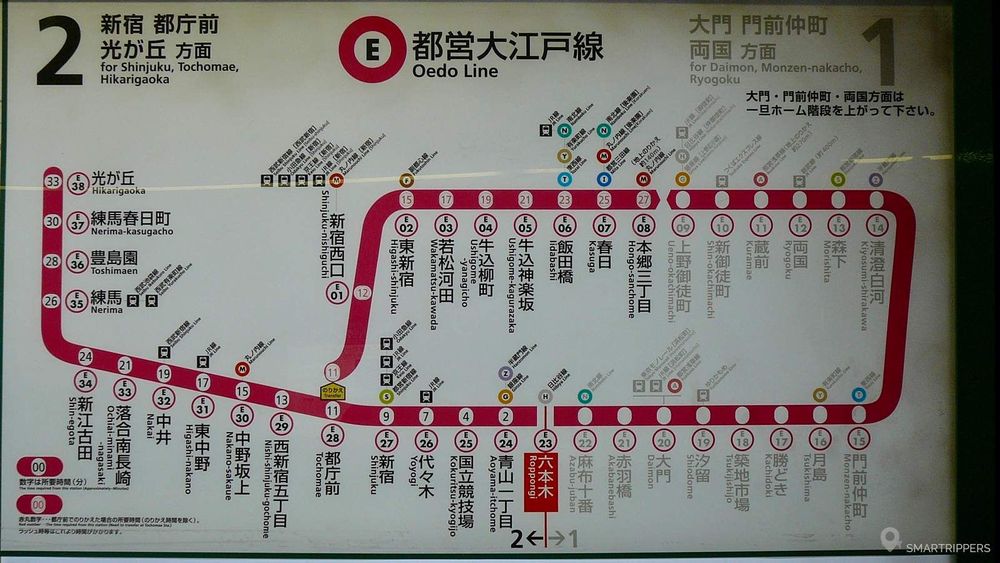
The train is the Japanese's preferred mode of transport. Fast, frequent, punctual and clean... it offers many advantages. When travelling in Japan, we recommend that you travel by train unless you want to travel to remote areas and are not afraid of driving on the left.
There are many sites that offer excellent guides to help you catch the train. Among those I find very well done the Japan Experience guide. You will find all the information you need to travel by train.
That's why I don't want to make a train guide in Japan, but rather bring you some tips and tell you about our experience through anecdotes.
Tip 1: Identify or plan your long trips ahead of time
Please note that staff at stations do not always speak English. So to avoid getting into distress, we advise you to prepare your long journeys. By that I mean whether you have to take several trains or use regional and national lines.
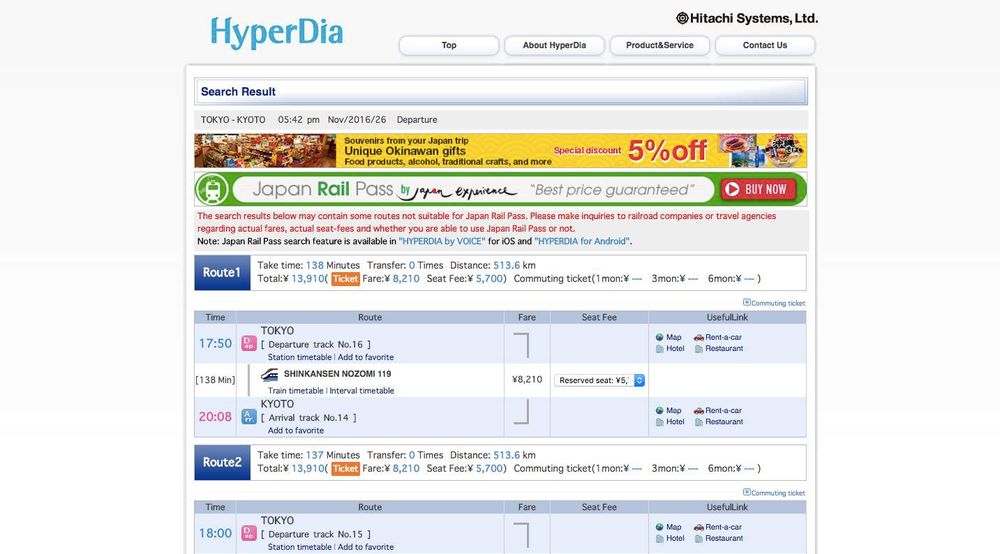
If you are planning your trip to Japan, there is only one site to know by heart: Hyperdia. This site will tell you everything you need to know when travelling. To do this, simply use the form on the homepage and enter your departure and arrival cities as well as the desired day and time. Depending on your criteria, the site will show you all possible combinations of transports (including airplane). For each itinerary, you can choose to display several solutions (up to 10) which will allow you to obtain different proposals at different prices and at different times.
For each itinerary, the site displays the exact timetable of each train, the platform number (very useful!), the name of the line, the type of train, the travel time, the duration of the connections, the price of each ticket and the seat price if applicable. With all this information, you will know everything you need to travel with peace of mind.
If you have a JR pass, go to the advanced options and uncheck the boxes "NOZOMI / MIZUHO / HAYABUSA (SHINKANSEN)" and "Private Railway". You will only have to pay for the journeys covered by your pass.
Once you have identified your route, or the different potential routes for more flexibility, print your Hyperdia roadmap. This will be very useful when you are on site to find your way around, thanks to the number of the platforms, but also to buy your tickets directly at the ticket office if you have difficulty understanding how the machine works or making yourself understood.
Summary
- 1Tip 2: Identify the different train companies
- 2Tip 3: Use the automatic teller machines to buy your local tickets and the ticket counter for long trips.
- 3Tip 4: Do not reserve seats for long trips except during peak periods or if you have a JR pass
- 4Tip 5: Calculate the profitability of a JR pass
- 5Tip 6: Buy a Suica card
- 6Tip 7: Don't take the subway during rush hour
- 7Tip 8: Follow the lines in the metro
- 8Tip 9: Identify the wagons
- 9Tip 10: Sit comfortably by tilting the seat at your convenience
1Tip 2: Identify the different train companies
In Japan, several companies operate the railway network. The main company is Japan Rail (JR), the national company. The vast majority of trains are JR trains, but other private companies also operate smaller networks such as Tokyo Metro and Toei Subway, where Tokyo Metro and Toei Subway share metro lines.
In the case of Tokyo, local JR and private lines are therefore available. But this is also the case in other cities, such as Hiroshima for example.
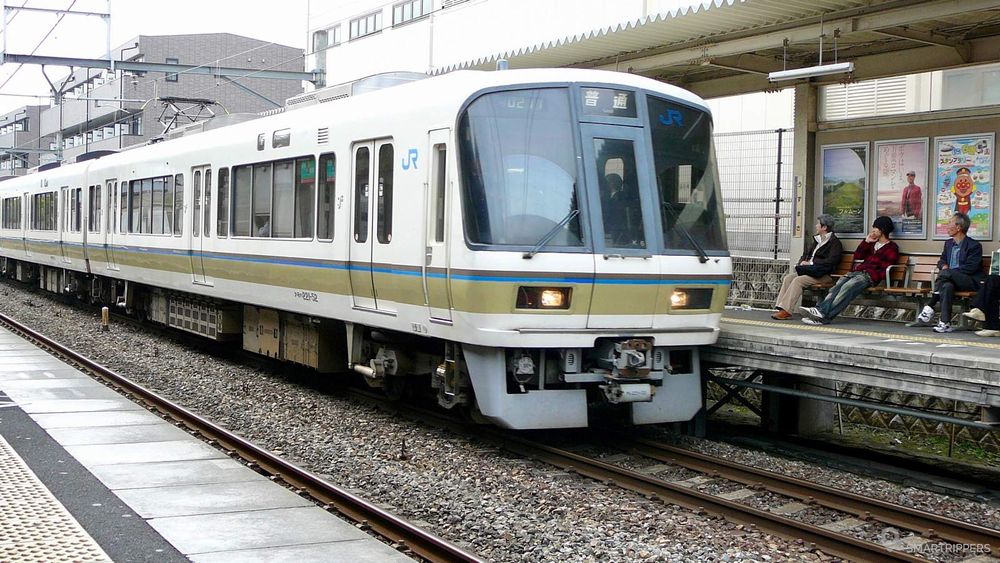
Why is it important to understand this subtlety? Because each company manages its own network, which implies different tariffs for each of them. In practice, if you are travelling on a route that uses the networks of 2 different airlines, you will have to take 2 tickets.
Whenever possible, on the same route, choose to take trains from the same network, in order to facilitate the logistics of your journeys.
But be reassured, within the same city, each network is sufficiently large and dimensioned to allow you to carry out the whole of your journey on the same company for a little walk. To find your way around, you will find in all the stations a map of the lines of each company.
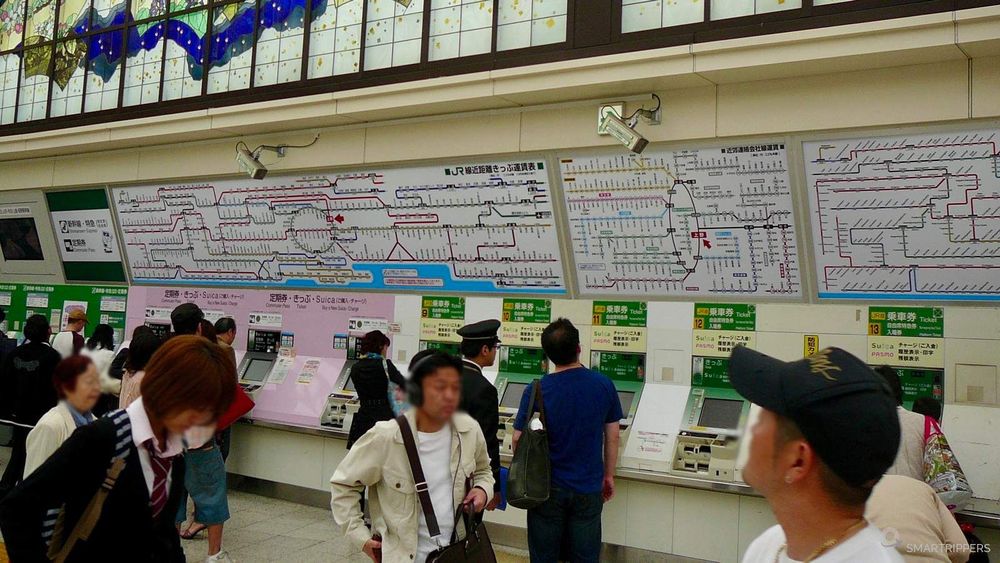
As for the famous JR pass, do not forget that it is only valid on JR trains, with the exception of Shinkansen NOZOMI and MIZUHO. If you have a JR Pass and you need to take the train from a private network, you will have to buy a ticket.
Panic at Iseshi Station!
In May 2015, we took the train to Ise, a small town in the prefecture of Mie. We had to take a Limited Express and then a Shinkansen. Pressed by time, we are heading for a machine. After some research, we realize that our destination station is not shown on the map and we cannot deduct the price from it.
We then asked for help from someone who was waiting and spontaneously helped us. He didn't speak English, but by showing him our Hyperdia sheet he understood right away. So he tried to explain to us by showing us the screen and making big gestures. But by the time we understood, the train arrived.
Unable to buy our ticket, we boarded the train without a ticket.
Once the train was under way, we advanced from cars to cars in search of the controller (there was always one in Limited Express and Shinkansen). We explain our misadventure to him by talking a few Japanese words and showing him our paper. Immediately he takes out his machine and writes us on a piece of paper the price to pay for each ticket. We pay the bill and he prints the tickets.
It was later that we understood why the destination station did not appear. In fact, the first train was operated by a private company and the Shinkansen by Japan Rail (JR). As a result, it was impossible to reserve the entire trip at the first terminal. We should have been looking for the fare to get to our transfer station (the last station on the private network) and not to our destination.
If you are faced with this situation, consider whether the train you are to take is operated by a private company. In this case, take a ticket for your trip and complete the rest of your journey when you transfer. So don't underestimate the time to take your second ticket.
2Tip 3: Use the automatic teller machines to buy your local tickets and the ticket counter for long trips.
For local journeys

If you need to take the train to get around town, use the large terminals at the entrances to each station to buy your tickets. There is always a key or a big "English" button that will allow you to translate the interface into English.
In Japan, the fare is calculated according to the distance travelled. In the metro, for example, you will always have a large card displayed above the terminals with the price between the departure station and each station. You will have to identify the price of your trip and choose the right square on the terminal screen.
Don't panic if you made a mistake and didn't pay enough. At the exit, the gate will not open, but you can go to the terminals "fare adjustment" to adjust the difference.
For long journeys
If you need to travel long distances, chances are you'll be required to take a Shinkansen or Limited Express. In these cases, the booking is more complex because you will have to choose several options:
- Choice of class: 1st class (green class) or normal (ordinary)
- Choice of seat reservation: reserved in non-smoking wagon, reserved in smoking wagon, not reserved
For this reason, we suggest that you go directly to the station counter and show your Hyperdia roadmap to the staff. Please specify if you wish to travel in 1st class and if you wish to reserve a seat. In case of misunderstanding, the employee will probably offer you a reserved seat in regular class by default.
You can also take advantage of it to ask for seats on the window side, it's always more pleasant!
3Tip 4: Do not reserve seats for long trips except during peak periods or if you have a JR pass
In Shinkansen and Limited Express, seat reservations are subject to a charge. Use this option only if your chances of finding a place on the train seem low, or if you have a JR Pass (in this special case, the reservation is free of charge).
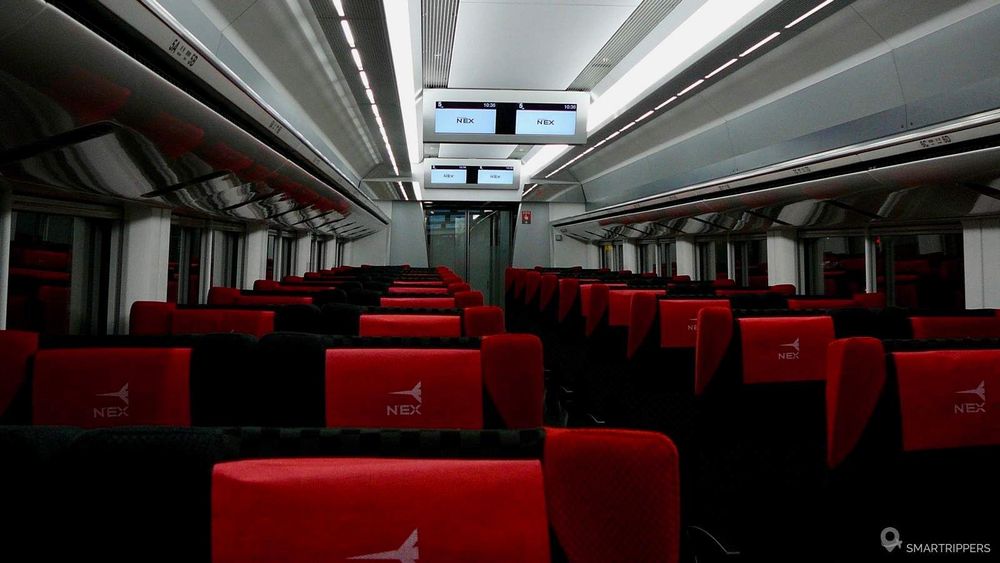
The frequency of trains is usually high, even in the middle of the day. During our various stays, we have always found room in the wagons without reservation. However, we recommend that you reserve your seat in the following cases:
On the contrary, we advise you not to reserve a seat if:
Report on the number of visitors during our different stays
In April/May 2010, we travelled a lot by train during the Golden Week on long journeys. On the 2nd day of the week (not a holiday), we made the round trip to and from Kyoto/Hiroshima during the day. To our surprise, the train was not fully booked, either on the way out or back.
In the middle of the week we covered the Kyoto/Tokyo route at the end of the day. This time there were more people, but there were still a few seats left, usually in the middle of the rows of 3. Overall, we noticed a lot of crowds during peak periods (early morning and from 5 p. m.), but in the daytime, overall, we did not see a lot of traffic.
In May 2015 (excluding Golden Week), we made all our trips without reservation. Each time we found a place side by side without difficulty, even to go from Shin-Fuji to Tokyo in the evening. However, on this last trip, the car without a reservation where we were almost full when we arrived in Yokohama.
To avoid the stress of not finding a place, we systematically arrived at least 15 minutes early for low-frequency journeys, in order to be in first place on the queues at the quay. Finally, every time, all the passengers of our station got on the train.
4Tip 5: Calculate the profitability of a JR pass
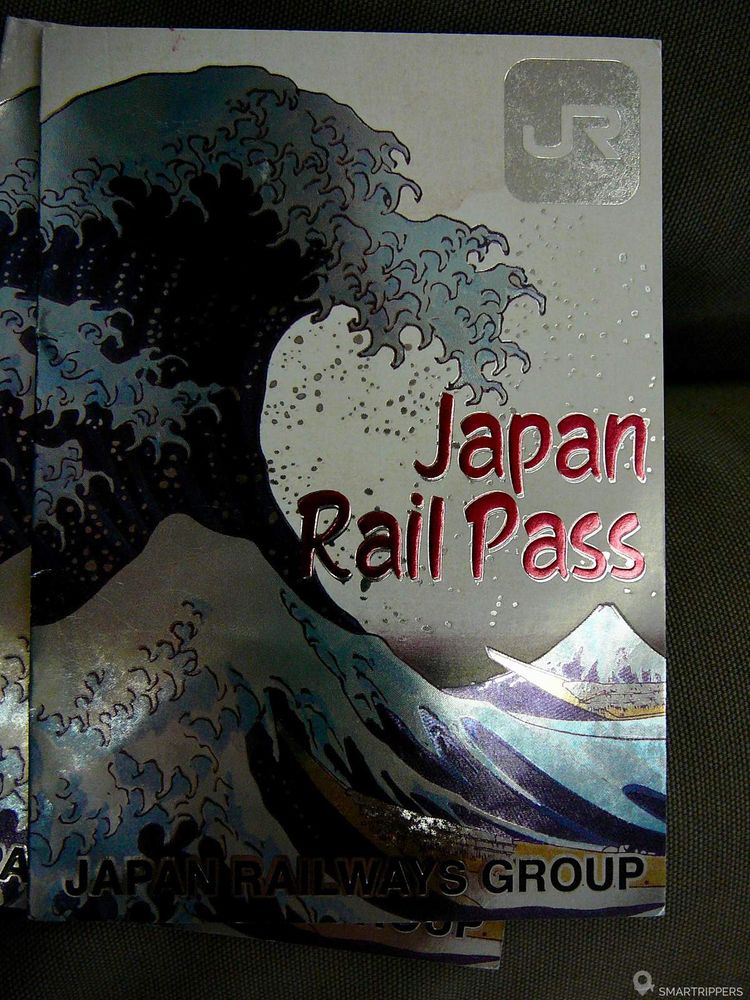
No, the JR pass is not always profitable during a stay in Japan! We all too often have the reflex to think that it is THE passenger's pass, but beware, the price of the JR pass is still high, so make sure to make it profitable before you buy it.
First of all, you should know that there are several types of JR Pass. There is of course the national JR Pass (7-day, 14 or 21-day formulas) and regional JR Pass with a more limited geographical area. For more information on terms of use, exclusions and prices, please visit Japan Rail Pass.
To find out if it is advantageous to buy a JR pass for your stay, go to Hyperdia. Identify each of your trips and add up the prices. For Shinkansen and Limited Express routes, please include the seat fee to be added to the fare. In all cases, the seat is charged for a paid seat, but the price is higher if you choose a reserved seat.
Be aware of exclusions and routes that are operated by private companies. In these cases, you will always have to buy a ticket. Also include the price of your local travel.
Then compare:
Our experience: 3 trips, 1 single JR Pass purchased
During our 3 stays in Japan, we only bought a JR Pass once. In April 2010, Flo had rented a car for 10 days (trip to 4) and in 2015 at 2, we made a mix between car rentals in each visiting area and a few long-distance train rides. In the end, this combination proved to be more cost-effective and practical than taking a JR pass. The flexibility of a rental car is also to be taken into account because it allows you to venture far from the stations without any time constraints.
5Tip 6: Buy a Suica card
If you plan to take the train or metro regularly, we recommend that you buy a Suica card as soon as you arrive in Tokyo. But what is the Suica card? It's actually an ultra-practical card that you buy and recharge at the Suica kiosks that are present everywhere (especially in stations). It is then used by passing the card in front of the reader of the porticoes. In Tokyo, all stations are equipped with it. This allows you to no longer manage the purchase of tickets for each journey, nor to worry about the connections between the metro and the train.
To explain all this, here is a article from Japan Experience on the indispensable Suica card.
6Tip 7: Don't take the subway during rush hour
If you travel during a peak period on local lines (mainly between 7:30 a. m. and 9:30 a. m.), you may find yourself in the midst of a constant stream of travelers determined to get back to work. Perhaps you have heard of the "pushers", armed with their white gloves, who push all the passengers to the side of their arms to compact them in the wagon. The legend is true, and even if you only find pushers at certain stations, we clearly do not recommend this experience.
If you need to travel during rush hour, we recommend that you do not carry large bags or wait until the rush of traffic has subsided. It should be noted that not all metro and train lines are crowded, some of which are more or less frequented.

Nightmare in the Kyoto metro
One fine morning in May 2010, I had the good idea of taking the commuter train to Kyoto main station. It was around 8:00. When I got on the train, at the beginning of the line, there were already no more seats. So I stood in the middle of the main airlock.
At each stop, a stream of passengers would climb into the car, filling it up gradually. We were already starting to get very tight and we still hadn't made it to Kyoto. When we reached the first train station in town, the platform was black! Seeing the train already full, I wondered how all these passengers would be able to get in. And that's when the ordeal began!
The doors opened and the crowd began to rush into the already full car. In a matter of seconds, I was thrown against the passengers who surrounded me, forgetting any notion of intimacy. My chest was pressed against the back of a young man and a woman was pressed against my back. The train left while the platform was still black. I couldn't move too much, I was just hoping to get out at my destination. At the next stop, same scenario. But what I hadn't considered was that the situation could get worse.
I used to take the crowded subways and RER of Paris in the middle of the week, but next to it I can assure you that it's nothing! The doors opened, and although it seemed no longer possible to get an individual into the train, the flow of passengers began to push us up. I didn't see if there were pushers on the dock, but suddenly we were crushed against each other.
I was so compressed that my ribcage had difficulty deploying. I was struggling to breathe, trying to breathe, breathing in small puffs of air.
The train's gone again. That's when I felt bad. It was terribly hot. I felt like I was suffocating, I was running out of air. I felt like I was leaving. At last the doors have opened. We arrived at the central station. And all of a sudden, the whole car emptied in seconds. In an instant, I found myself catapulted outside without understanding what was happening to me.
It was not possible to oppose the flow of passengers on the move. So I let myself be carried along by the current until the tidal wave dissipated, until I finally came to my senses.
7Tip 8: Follow the lines in the metro
Japan is a highly codified country and train station corridors are no exception. Remember that in Japan you drive on the left, so the direction of travel is the same. When you are in the subway, always squeeze on the left. In some corridors, you will notice colourful traces of the floor. Follow them carefully because they indicate the direction of traffic.
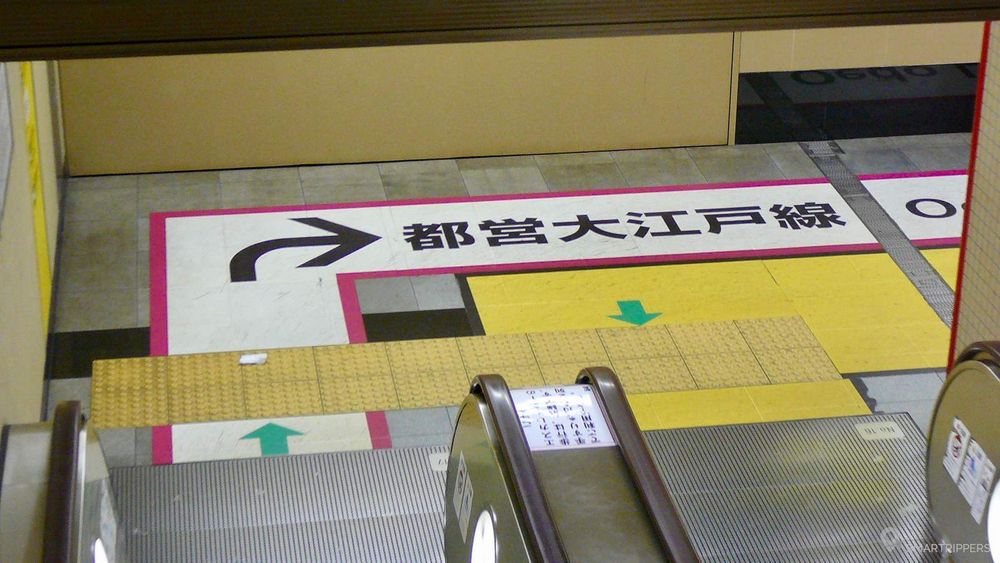
Be sure to respect them on the one hand towards other passengers and on the other hand because you risk a reprimand if you don't follow the rules. I had a bitter experience of it when I arrived in Narita in 2010, the very first day I set foot on Japanese soil.
The day I got arrested by the Japanese police
I had just landed at Tokyo Narita airport. My first goal was to take the Narita Express to Tokyo. Not wanting to miss the next train departure, I rushed to the platform.
A little lost with the Japanese signage, I hadn't paid attention to the direction of travel and I stupidly took a lane in the opposite direction. There were no barriers to signal it, just traffic logic. After a few yards, I hear whistle behind me.
I turn around and see a group of four policemen running towards me.
I'm completely stunned. One of the men, who reached my height, literally started to yell at me in Japanese, unpacking dozens of words that I didn't understand. He didn't seem to be worried about me not understanding.
He then asks me for my passport and peels it in all directions. Together with his colleagues, they started to look at each page carefully, and then one of them pulled out a walkie-talkie. He then exchanged a few words by radio, and then communicated my contact information and my passport number.
I started to get scared, still not understanding what I had been able to do. Once the conversation was over, they wrote down my coordinates in a little notebook. Was I going to be registered as soon as I entered the territory? Finally, without any further explanation of these strange procedures, they let me go again after gestures so that I understood my mistake.
8Tip 9: Identify the wagons
In Japan, some wagons have special uses. It is therefore important to identify them before borrowing them.
For example, on some high-traffic local lines, there is a women's car available during peak hours. This wagon is indicated by its colour (often a different shade, usually pink) and by indications on the ground, as shown in the picture below.
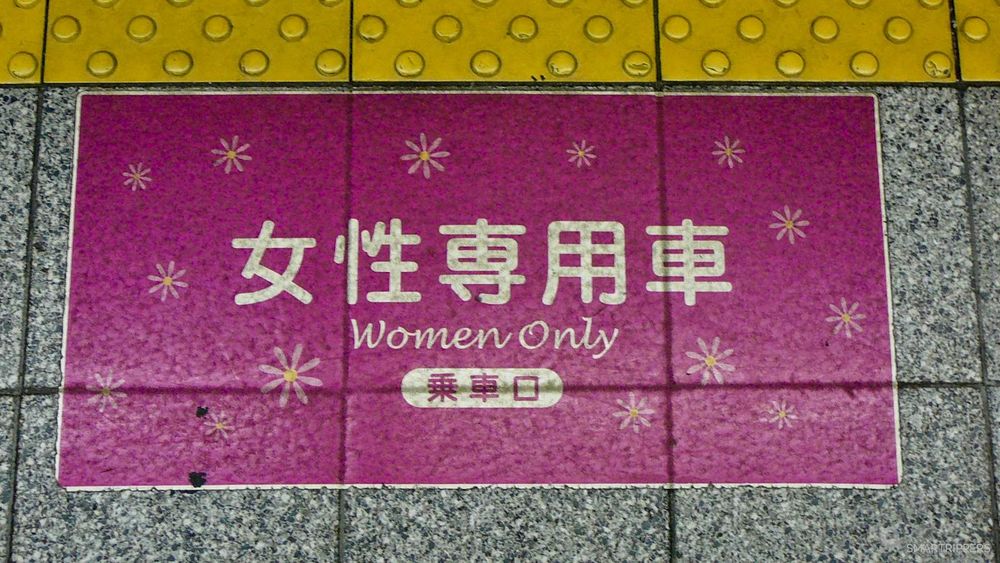
If you're a man, never get in those cars at rush hour. However, after rush hour, you will be able to climb in this car without any problems.
There are also 1st class (green class) wagons on some trains, recognisable with a green clover. They are reserved for holders of a specific ticket. You will also find silent cars, where it is forbidden to speak unless whispering. In short, be vigilant and don't run towards the train without looking where you are going.
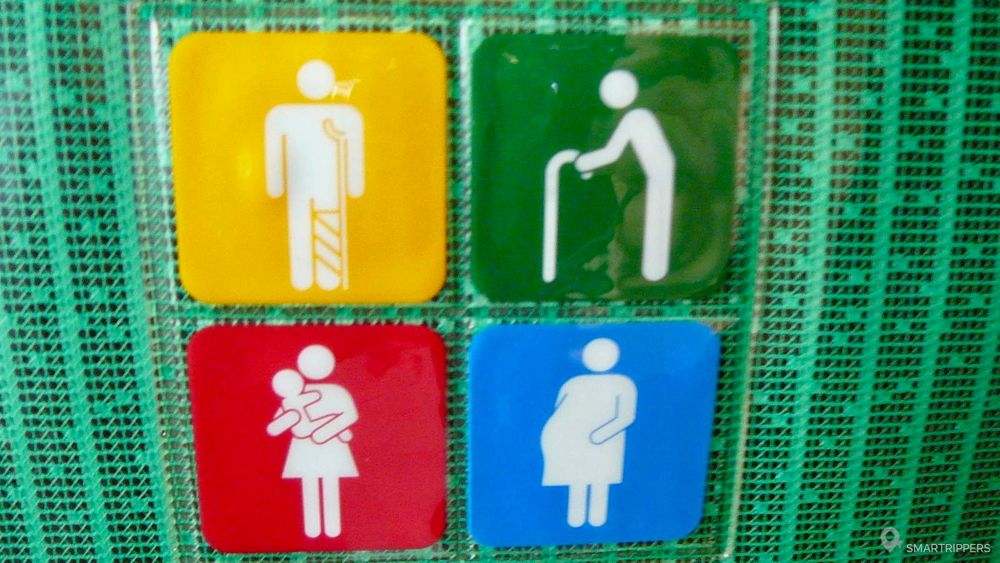
Speaking of wagons, also pay attention to the symbols you will see in some seats. In Japan, some places are reserved for the elderly, pregnant women, the infirm or those accompanied by young children. If you encounter these logos, especially do not sit at these seats, even if there is no one on the train. They are strictly reserved for the persons concerned.
9Tip 10: Sit comfortably by tilting the seat at your convenience
The Japanese invented a multitude of innovative concepts and to ensure maximum comfort for train users (excluding the metro). They have created systems that allow the seats to be tilted so that they can always be in the direction of travel!
If you pay attention, you will see that at the end of each train, an employee runs through all the cars and tilts each seat to position the backrest in the other direction! Once the train is well equipped, passengers will be able to get in.
The advantage of this system, in addition to always being able to be in the direction of walking, is that it is ideal if you are travelling with your family! No more 4 hours of train on 2 different rows. In all circumstances, you will be able to position your seats so that they are face-to-face if you travel together.
So far, we have only seen two different systems, but there may be others:
- In the Shinkansen, the entire row of 3 seats swivels. On the rows of 3 seats, look underneath the seat on the corridor side. You will see a small lever to unlock the row. Once the seats are released, simply rotate them to position the row in the desired direction.
- In the JR Line, it is the backrest of the 2 seats that tilts. To make it move, simply push or pull it. You will notice that the shape of the seat and its covering are the same on both sides!
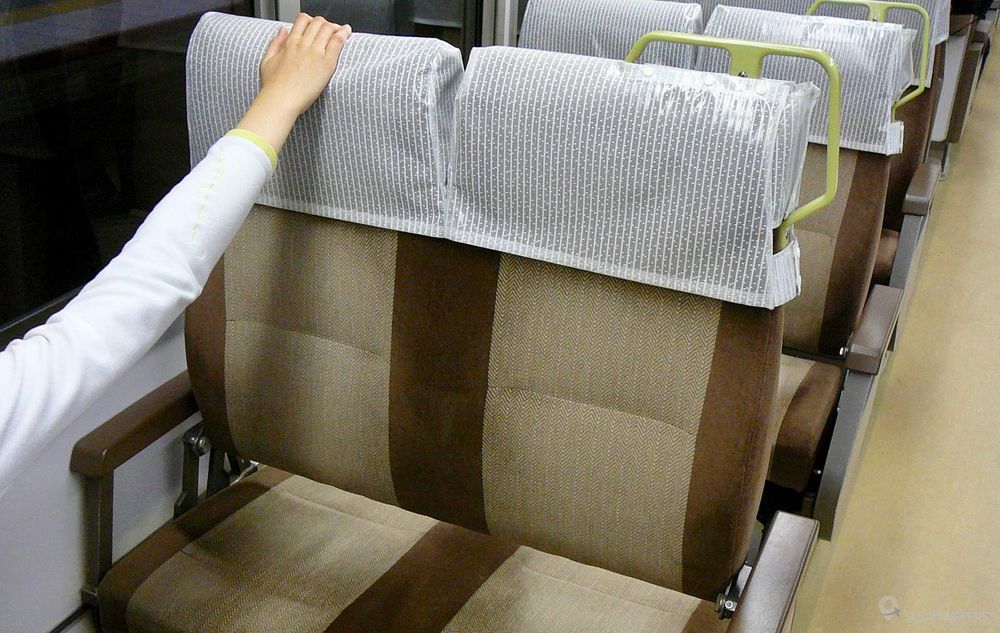
Above all, do not be ashamed to do so, this practice is very common and often used by families.
We are Sandrine and Flo, French thirty-somethings. In 2019 we quit everything to live our dream, become nomads and travel around the world. We left with our baby, Lena, who was only 5 months old at the time. After a first trip around the Pacific Ocean by plane and a long 3 months stay in Hawaii, we left to discover Iceland for 3 months on board our 4WD pickup truck and truck camper. Then we continued our adventure in North America.
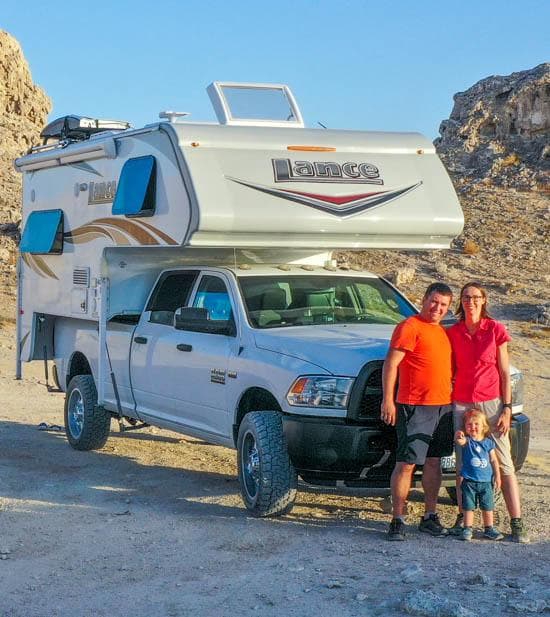
Today, if we can continue this adventure, it is above all thanks to our blog, Smartrippers! We created it one day in 2016, with the desire to share our good travel tips, without thinking that it would lead us there! We have developed it a lot over the years and have become experts on our 3 favorite destinations: Hawaii, Iceland and the American West. We now guide you to these destinations to help you plan the trip of your dreams!
Follow our adventures!